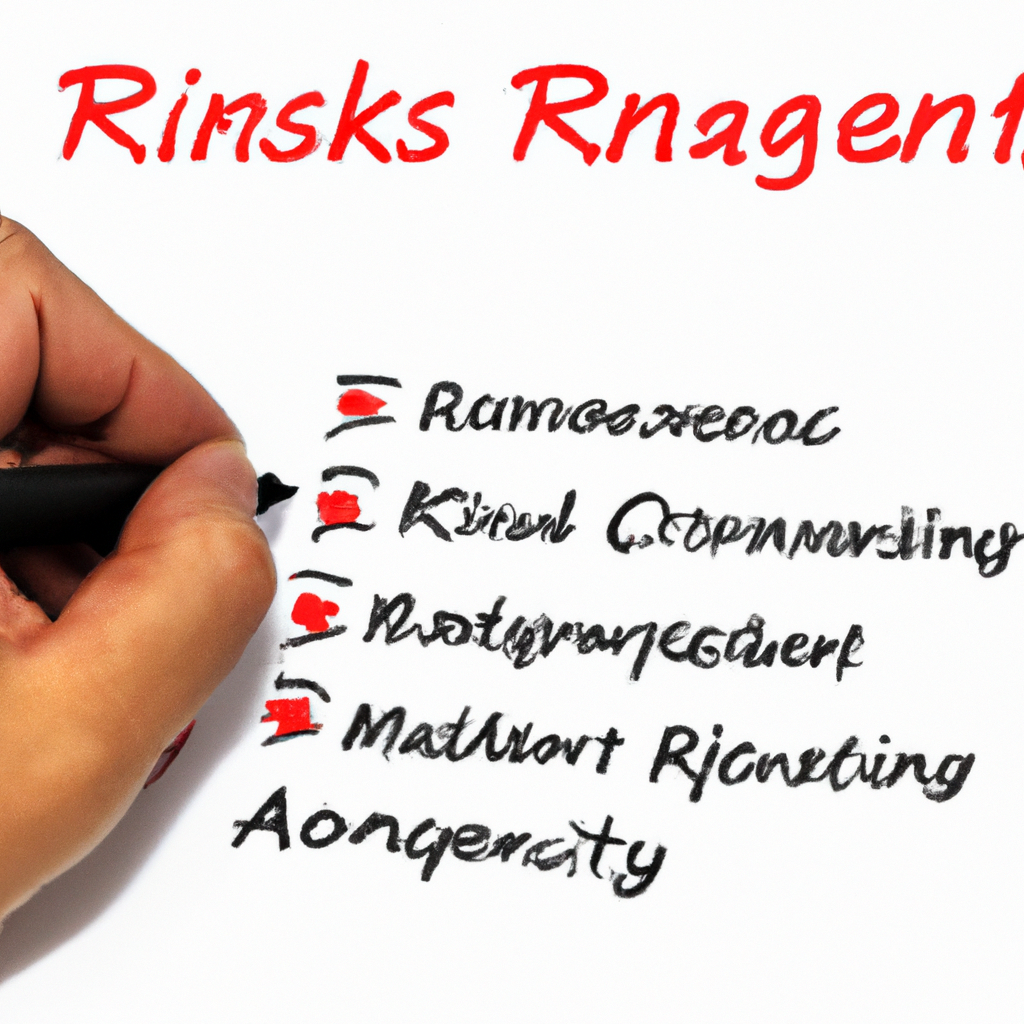Implementing Risk Management in Trading
Introduction
Trading in financial markets can be highly lucrative, but it is also accompanied by inherent risks. To navigate these risks effectively, it is crucial for traders to implement robust risk management strategies. In this article, we will explore the key steps involved in implementing risk management in trading.
Step 1: Assessing Risk Tolerance
Before diving into trading, it is essential to assess your risk tolerance. This involves evaluating your financial situation, investment goals, and personal comfort level with potential losses. Understanding your risk tolerance will help you establish appropriate risk parameters for your trading activities.
Step 2: Setting Risk Limits
Once you have determined your risk tolerance, the next step is to set risk limits. This involves defining the maximum amount of capital you are willing to risk on each trade or within a specific time frame. Setting risk limits ensures that you do not expose yourself to excessive losses and helps maintain discipline in your trading approach.
Step 3: Diversifying Your Portfolio
One of the fundamental principles of risk management is diversification. By spreading your investments across different asset classes, sectors, or geographical regions, you can reduce the impact of a single event on your portfolio. Diversification helps mitigate the risk of significant losses and ensures that your overall portfolio is not overly reliant on a single trade or market.
Step 4: Implementing Stop-Loss Orders
Stop-loss orders are an effective risk management tool that automatically triggers the sale of a security when it reaches a predetermined price. By setting stop-loss orders, traders can limit potential losses and protect their capital. It is crucial to determine appropriate stop-loss levels based on your risk tolerance and the volatility of the asset being traded.
Step 5: Regularly Monitoring and Adjusting
Risk management is an ongoing process that requires continuous monitoring and adjustment. Regularly reviewing your trades, analyzing market conditions, and assessing the performance of your portfolio is essential. By staying informed and adapting to changing market dynamics, you can make informed decisions to optimize risk management strategies.
Step 6: Utilizing Risk-Reward Ratios
Risk-reward ratios help traders assess the potential profitability of a trade relative to the associated risk. By establishing a favorable risk-reward ratio, such as aiming for a higher potential reward compared to the potential loss, traders can enhance their overall profitability over the long term. Calculating risk-reward ratios before entering a trade can help traders make objective and informed decisions.
Step 7: Embracing Risk Management Tools
In today’s digital age, numerous risk management tools and software are available to traders. These tools offer features such as real-time market data, risk analytics, and trade execution automation. Embracing these tools can significantly enhance your risk management capabilities and improve trading efficiency.
Conclusion
Implementing risk management in trading is a critical aspect of achieving long-term success and profitability. By assessing risk tolerance, setting risk limits, diversifying portfolios, utilizing stop-loss orders, monitoring and adjusting strategies, considering risk-reward ratios, and embracing risk management tools, traders can effectively mitigate risks and maximize their trading potential. Remember, trading involves risks, and it is essential to stay disciplined, informed, and adaptable to navigate the ever-changing financial markets.
